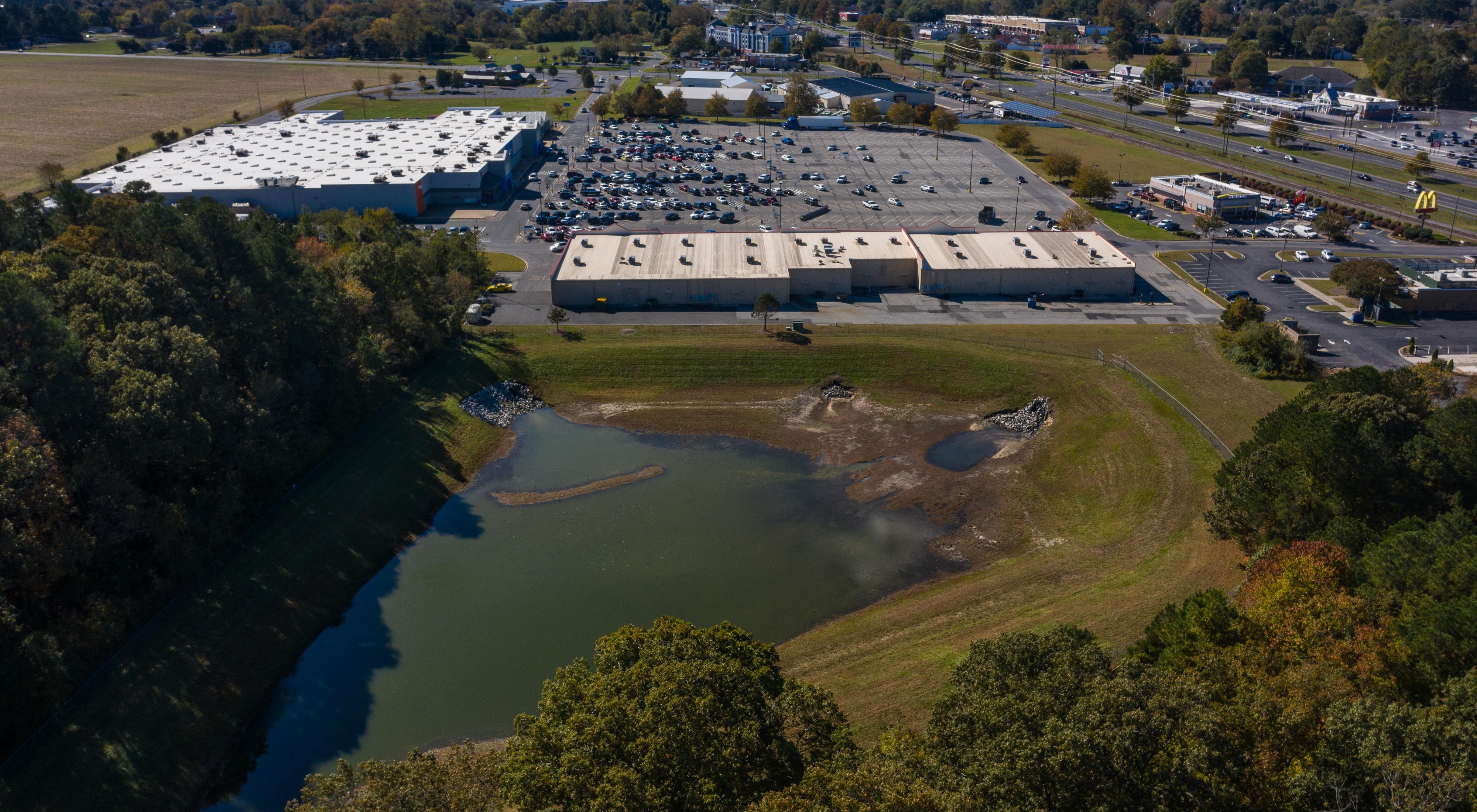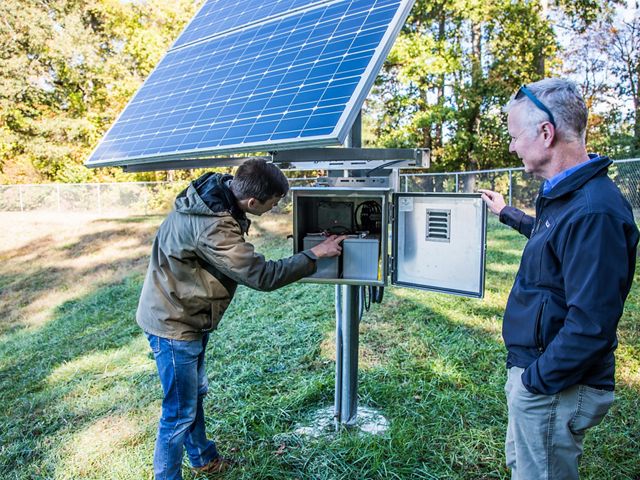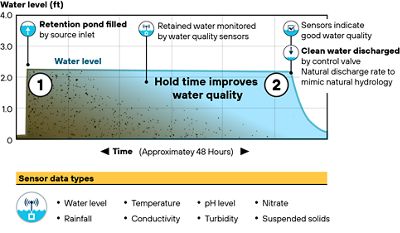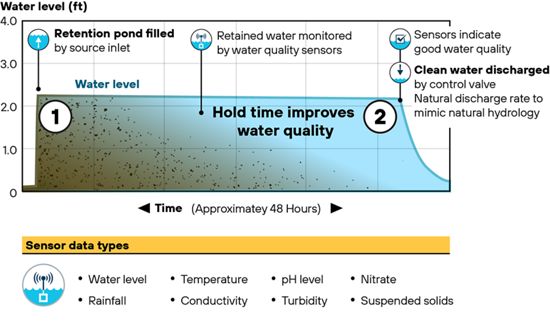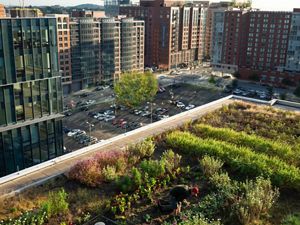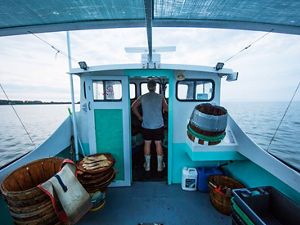The Nature Conservancy and Walmart Recognized for Innovative Collaboration in Chesapeake Bay with Global Award
The prestigious Lighthouse Award was presented to Walmart and TNC’s Brightstorm program during the BlueTech Forum hosted by Blue Tech Research.
This article is co-authored by Walmart’s Director of U.S. Environmental, Health and Safety Compliance, Toni McCrory, and Craig Holland, who is the Senior Director of Investments for The Nature Conservancy's Healthy Cities Program and CEO of TNC’s Brightstorm Program.
Addressing Challenges
On May 17, 2023, Walmart and The Nature Conservancy’s Brightstorm program were presented with the prestigious Lighthouse Award during the BlueTech Forum in Edinburgh, Scotland.
BlueTech Research hosts the Forum, which convenes the world’s leading water technology companies, entrepreneurs, investors and executives from research centers around the world to network and present on market trends and insights in order to address challenges related to water pollution and scarcity. The Lighthouse Award is given to organizations "that have blazed a trail of innovation to conserve and enhance water resources and embed sustainable processes through pioneering work.”
It was an honor to receive the Lighthouse Award for a project that’s a key testament to how Walmart and The Nature Conservancy are collaborating on systemic issues, and recognition of how both organizations are using technology-driven approaches to achieve impacts at scale.
Completed in 2021, our teams won the award for work to help improve water quality in the Chesapeake Bay. Lighthouse Award recipients must exhibit “new ways of using technology, finance or partnerships to reduce their impact in water-stressed regions or build resilience in their local water systems.” Our work in Maryland exhibited all three of these attributes.
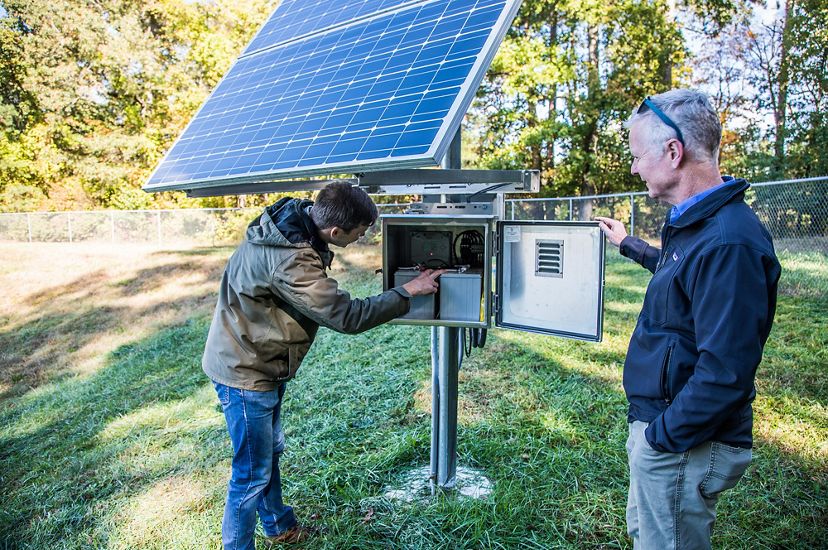
Innovative Technology
Stormwater runoff from parking lots, roofs or other impervious surfaces is one of the leading causes of water pollution in the United States and around the globe. Oftentimes, this runoff is captured by stormwater retention ponds before it makes its way into our waterways. At three such ponds on Walmart retail facilities in Hagerstown, Fruitland and Aberdeen, we worked with OptiRTC, a stormwater management platform company. Opti’s technology continuously monitors the weather forecast and adapts stormwater controls in real time. This is enabled by solar-powered sensors, actuated valves and cellular web gateways, which are operated remotely by Opti’s cloud-based software.
These actions build on research that shows that holding water in these ponds longer improves the quality of water when it is released by giving plants more time to absorb pollution-causing nutrients. Other pollutants, such as heavy metals, have additional time to settle to the bottom of the ponds, which are periodically dredged.
Combined, the three ponds treat runoff from more than 80 acres of impervious surface. These smart ponds are now discharging approximately 77 percent less sediment, 60 percent less phosphorous and 39 percent less nitrogen into local streams—and ultimately—the Chesapeake Bay. Conversely, the technology we employed prepares for incoming runoff during storm events by drawing down pond levels, which can reduce flood risk.
Innovative Financing and Collaborations
The impetus behind our work was the 2010 U.S. EPA-established Chesapeake Bay Total Maximum Daily Load (TMDL)—a historic and comprehensive pollution diet to restore clean water in the Chesapeake Bay and the region’s streams and rivers. In order to meet regulatory obligations, the Maryland Department of Transportation (MDOT) became the nation’s first Department of Transportation to purchase water quality credits derived from making existing infrastructure smarter.
And in the process, Walmart is able to provide measurable and meaningful water-related benefits to the surrounding community.
According to Pete Rahn, the former secretary of MDOT, the project, “allows us to deal with an acre of stormwater runoff for less than $40,000. The traditional approach cost us $150,000 an acre. So, this is going to save taxpayers tens of millions of dollars.”
Systemic issues require purposeful collaborations. And we hope this model of public-private and interagency cooperation is replicated across the nation by other organizations as we all collectively work to meet a growing demand for cost-effective infrastructure upgrades like these that produce meaningful outcomes for water quality as well as other benefits for people and nature.
The Nature Conservancy is a global conservation organization dedicated to conserving the lands and waters on which all life depends. Guided by science, we create innovative, on-the-ground solutions to our world’s toughest challenges so that nature and people can thrive together. We are tackling climate change, conserving lands, waters and oceans at an unprecedented scale, providing food and water sustainably and helping make cities more sustainable. The Nature Conservancy is working to make a lasting difference around the world in 81 countries and territories (40 by direct conservation impact and 41 through partners) through a collaborative approach that engages local communities, governments, the private sector, and other partners. To learn more, visit nature.org or follow @nature_press on X.
